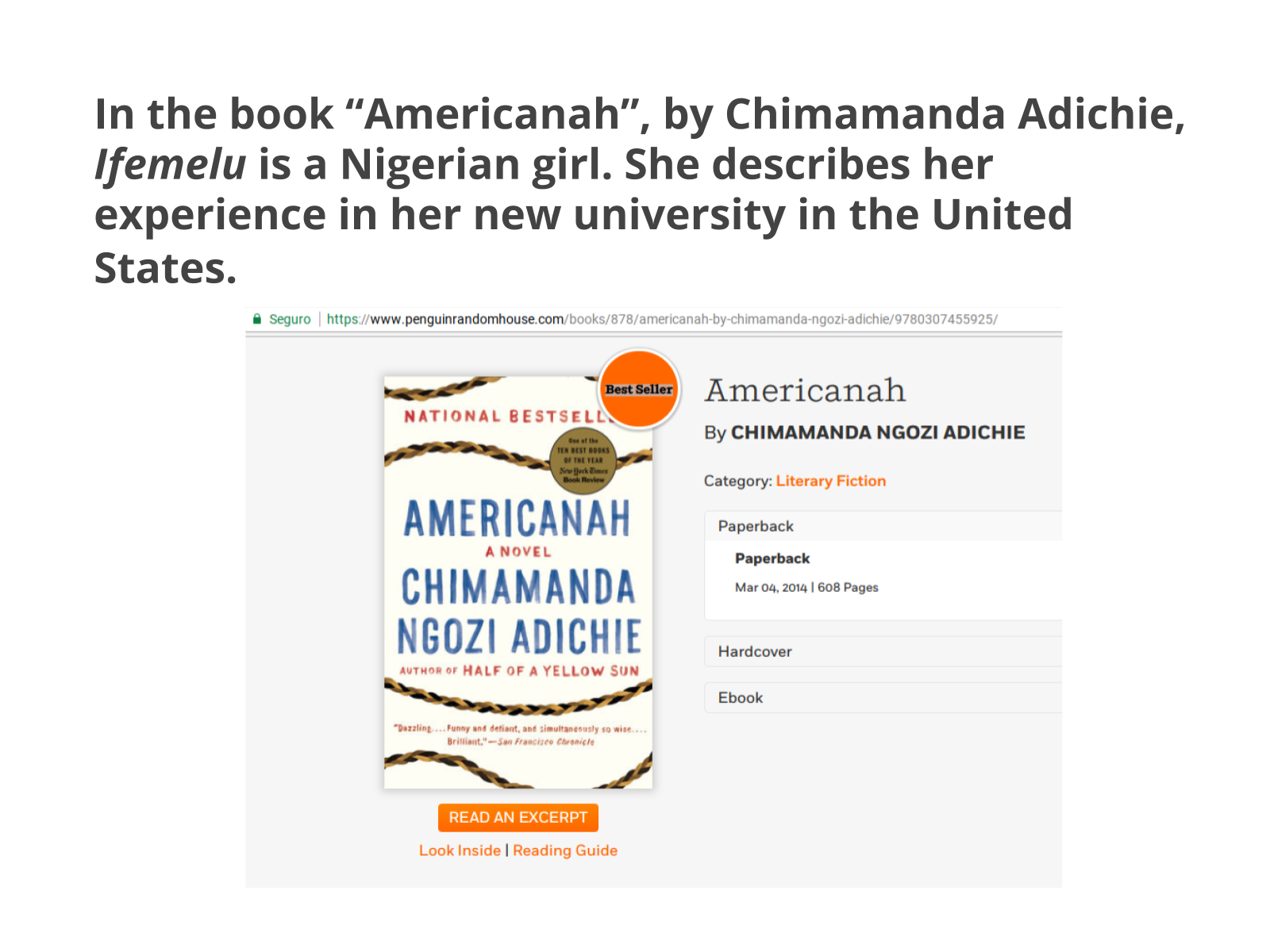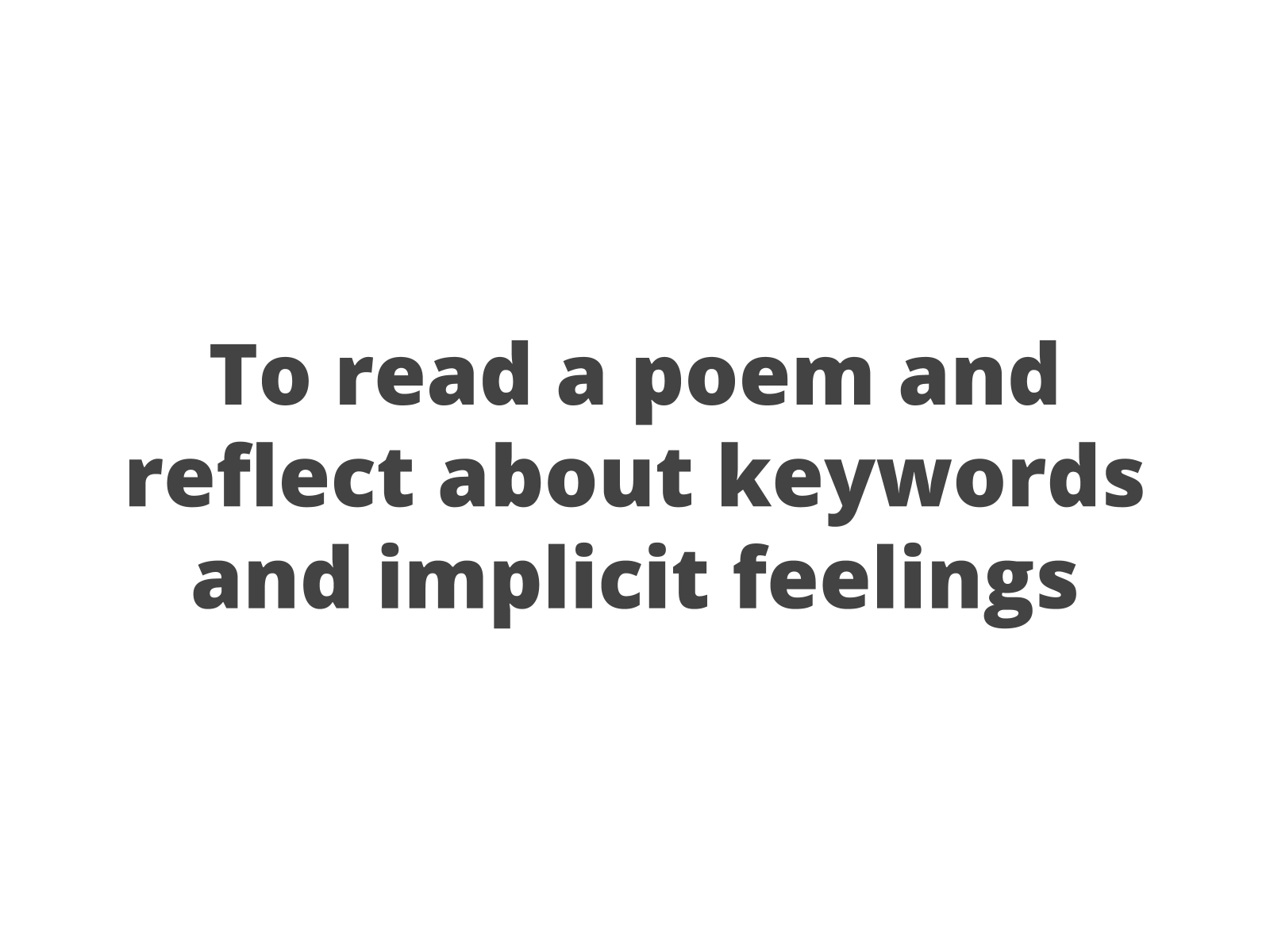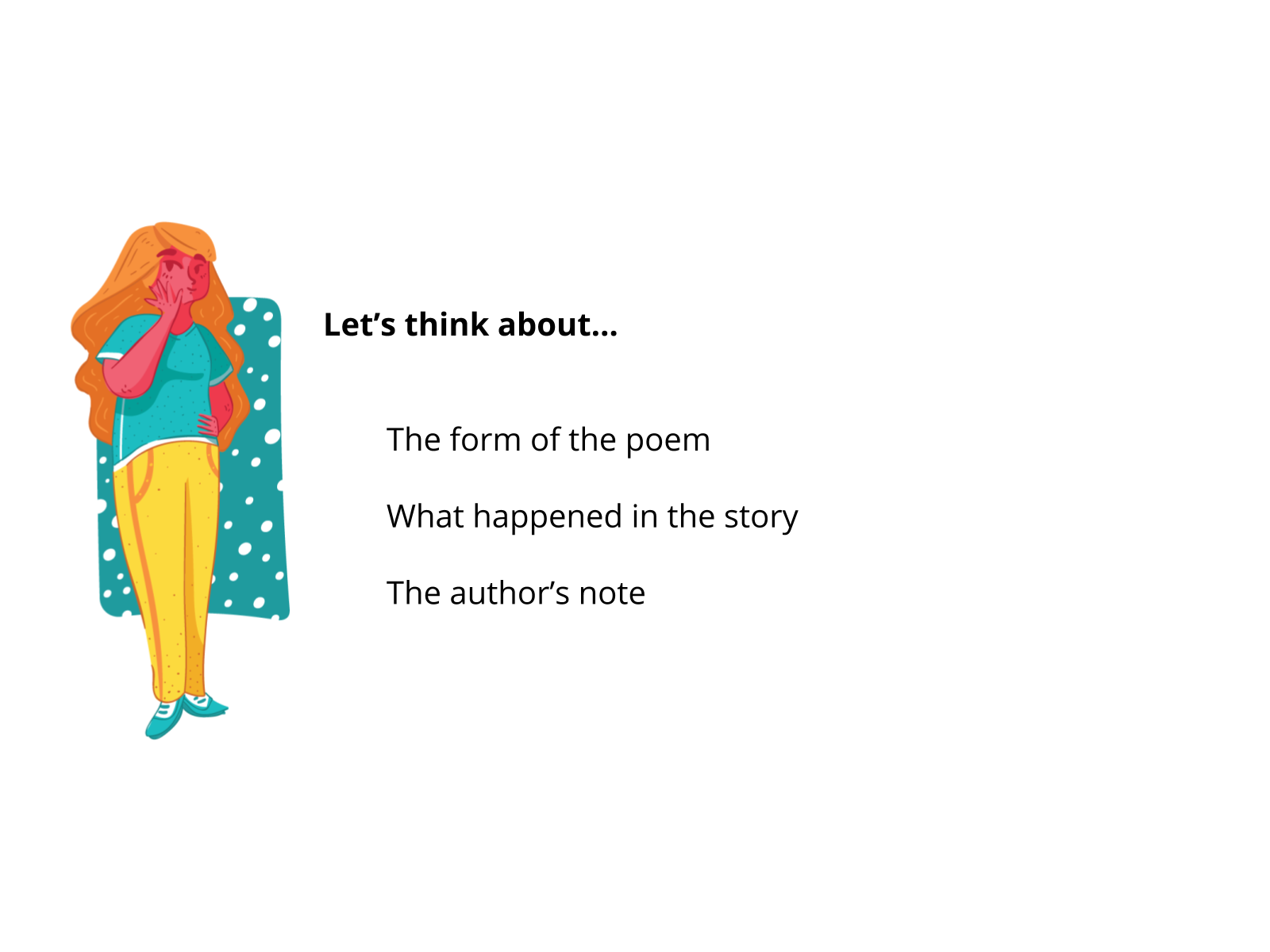Resolução de atividade - context
Plano de Aula
Plano de aula: Leitura e comparação de fábula e poema I
Plano 13 de uma sequência de 15 planos. Veja todos os planos sobre Reading skills I
Por: Nathália Gasparini
Tem interesse no tema "Neurociência, adolescências e engajamento nos Anos Finais"?
Inscreva-se neste tema para receber novidades pelo site e por email.
Habilidades BNCC:

Precisa de ajuda para criar uma aula personalizada?
Crie seu plano de aula em menos de um minuto no WhatsApp.
Aula
Sobre este plano
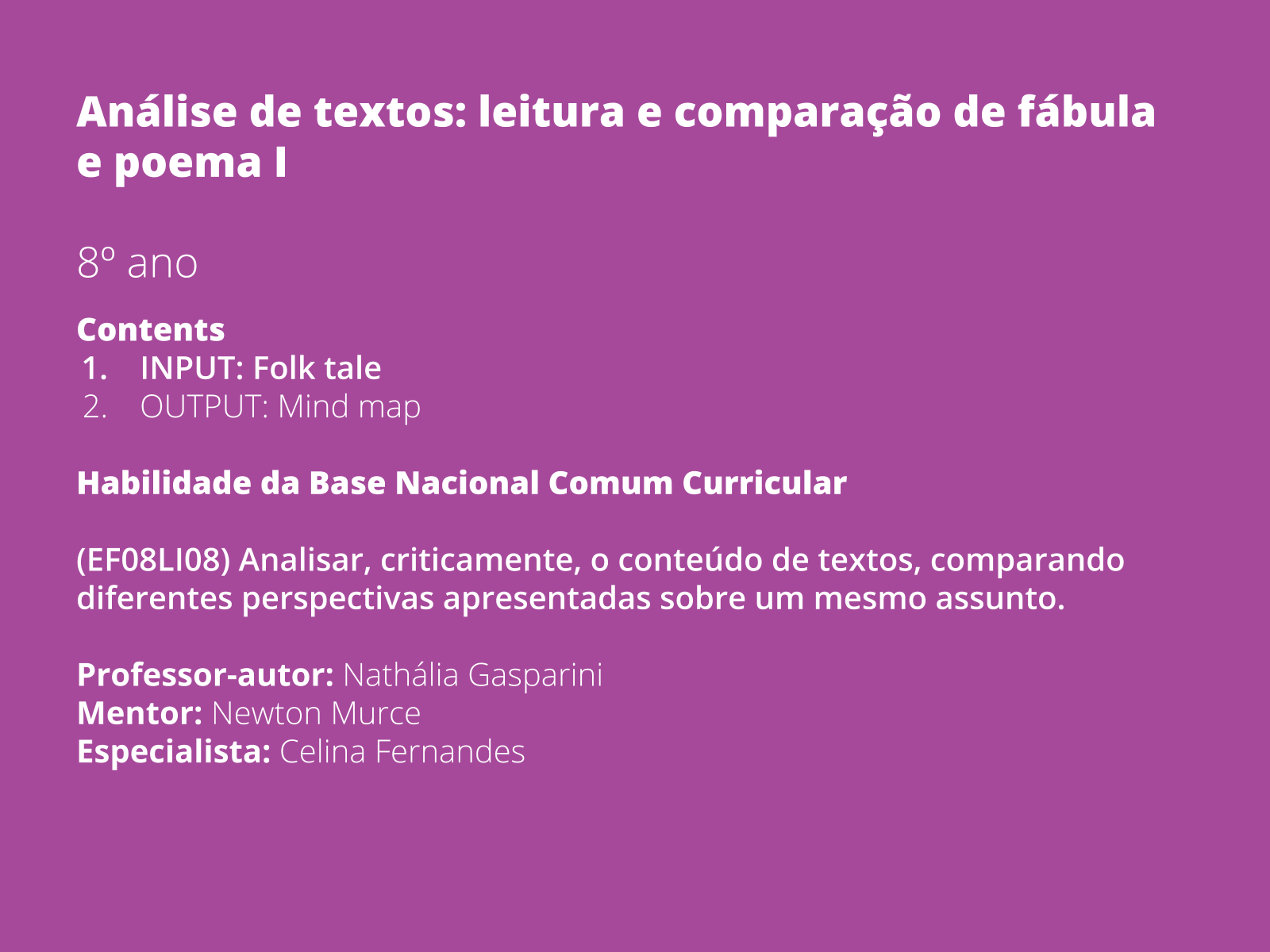
Este slide não deve ser apresentado para os alunos, ele apenas resume o conteúdo da aula para que você, professor, possa se planejar.
Este e o plano seguinte trabalham com a mesma habilidade, a partir da comparação de uma fábula e de um poema que tratam do mesmo tema, para construir uma análise. Por isso, devem ser utilizados em sequência.
Objective
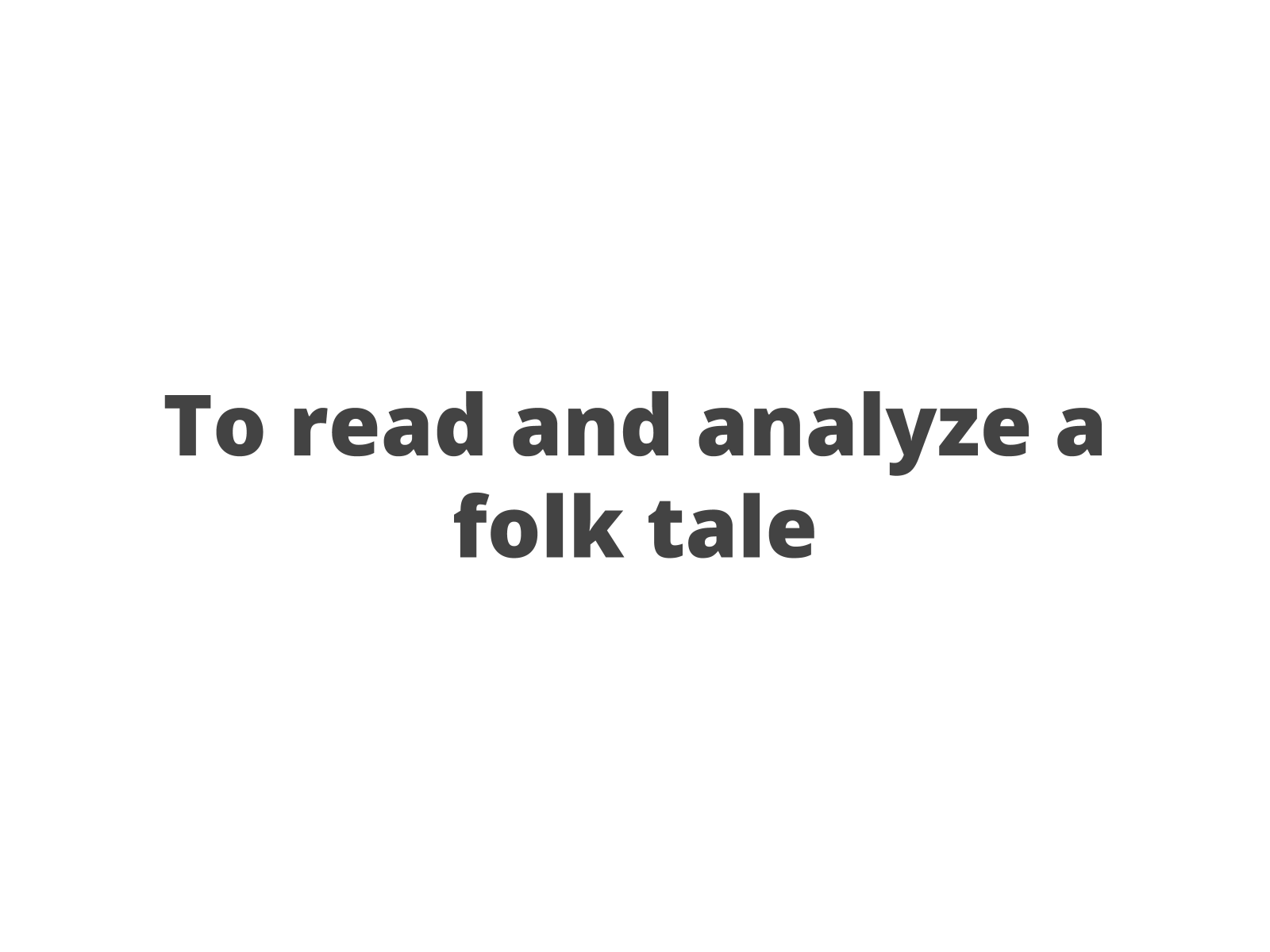
Tempo sugerido: 2 minutos.
Propósito: Compartilhar o objetivo da aula com a turma.
Orientações: Leia o objetivo da aula. Explique: We’re going to read and analyze a folk tale, in order to compare it with another text next class.
Novo curso gratuito
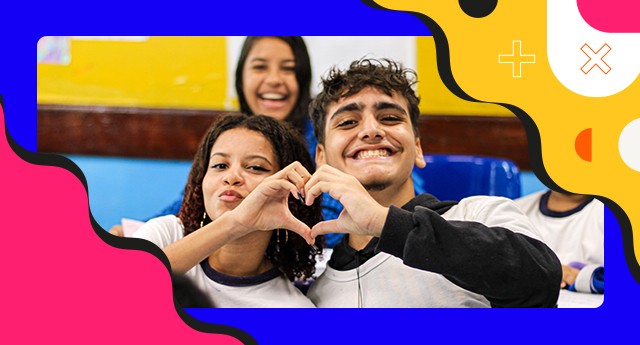
Conheça nosso mais novo curso sobre adolescências, neurociência e engajamento nos anos finais
VER CURSO
